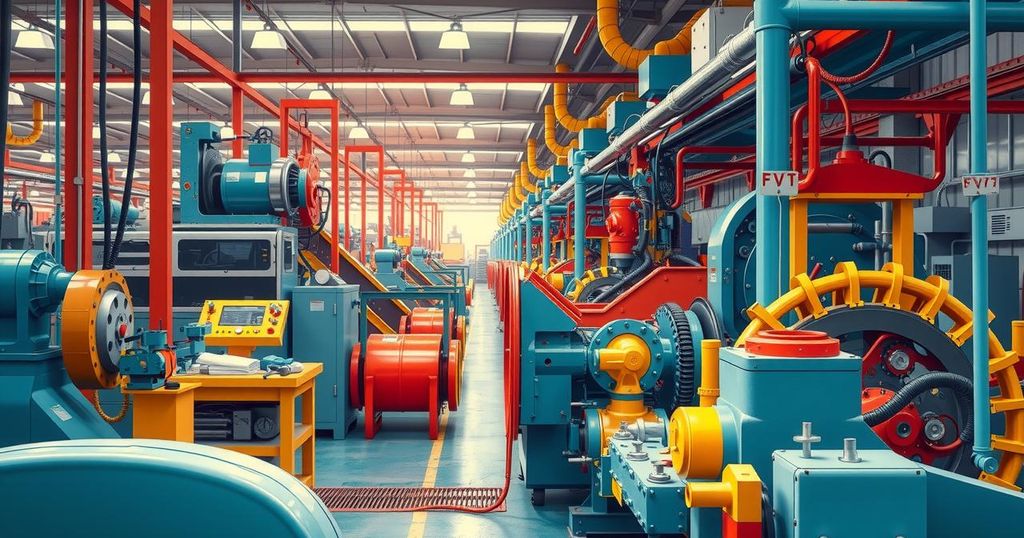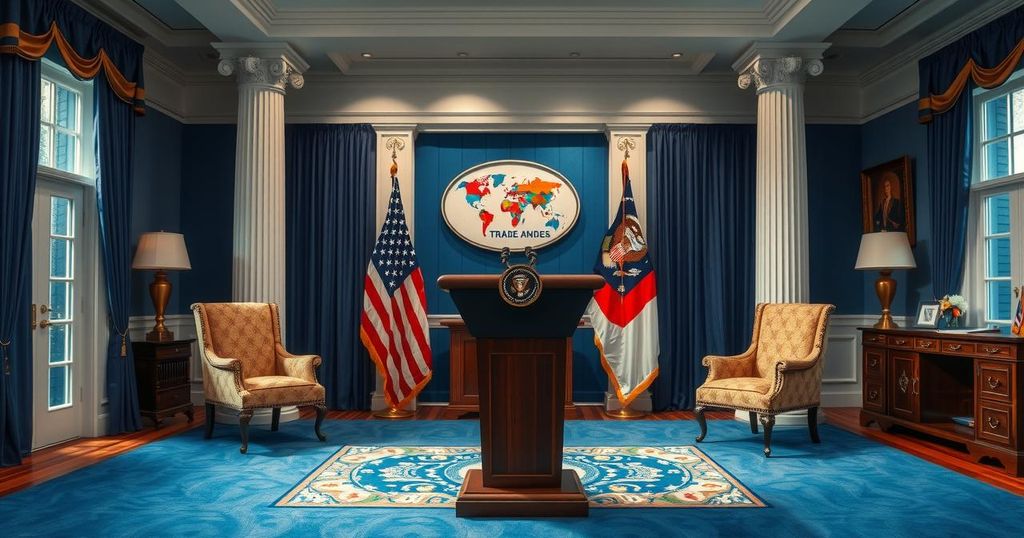India Seeks Manufacturing Gains from U.S.-China Tensions and Tariffs
India is optimistic about enhancing its manufacturing sector amid U.S.-China tensions, with Tamil Nadu attracting women workers, especially at FoxConn. With rising tariffs on China, India hopes to increase its share in global manufacturing, particularly in iPhone production. However, uncertainties regarding Trump’s tariff enforcement could hinder this progress despite the potential benefits.
In light of escalating tensions between the United States and China, India is optimistic about its manufacturing sector benefiting from U.S. tariffs on Chinese goods. In Tamil Nadu, specifically in Sriperumbudur, numerous women are seeking employment at FoxConn, a major manufacturer of iPhones for Apple. Women constitute approximately 70% of the workforce at the FoxConn plant,
Keerthana, a 21-year-old woman, recently arrived after an overnight bus journey to the FoxConn dormitory. She received a job offer at a salary of $170 per month, a significant increase compared to her previous earnings in a garment factory. This increase represents a vital contribution to her family’s income. Former government economic adviser Arvind Subramanian remarked on the significance of manufacturing jobs for women, stating, “I am unambiguously in favor of manufacturing. Because you get many, many more women getting jobs.”
Tamil Nadu aims to enhance its labor-intensive manufacturing opportunities, given that it is home to over 40% of women working in India’s factories, despite accounting for only 6% of the national population. The Indian government, under Prime Minister Narendra Modi, envisions attracting more manufacturing enterprises as businesses seek alternatives to China, especially in light of the tariffs imposed by the Trump administration.
This strategy builds upon India’s prior successes in drawing manufacturing talent, particularly during the contentious Trump administration and throughout the pandemic, when concerns about China’s role in global supply chains intensified. The economic landscape continued to favor India even under President Biden, who retained many Trump-era tariffs on Chinese products.
Arvind Subramanian stated, “The fact that China was discriminated against… meant that India was a good place from which to sell back to the United States.” Since 2017, FoxConn has relocated operations from China to India as part of Apple’s strategy to diversify manufacturing. Currently, India produces nearly 15% of all iPhones, aspiring to increase this to 25% shortly, having exported over $20 billion worth of mobile phones last year alone.
However, challenges remain, particularly regarding Trump’s China tariffs. Analysts contend that Trump has not enforced his tariffs as rigorously as anticipated, historically proposing tariffs close to 60%. Suhasini Haidar from The Hindu noted the lack of aggressiveness in Trump’s policy towards China, which could hinder India’s advantage as a manufacturing hub.
Moreover, Trump’s discontent with India’s significant trade surplus with the U.S.—amounting to $45 billion last year—complicates matters. The 2024 U.S. Trade Representative report cites India’s tariffs, some as high as 150% on alcoholic beverages, as among the most substantial globally. Trump’s upcoming reciprocal tariffs may risk up to $7 billion in trade loss for India, creating further uncertainty in investment pipelines.
Contrary to these challenges, a Tamil Nadu government representative expressed optimism that companies would still transition to India due to a desire for diversification from China and the large consumer market present. He emphasized that “what hurts pipeline investment more than bad policy is uncertainty,” as speculation about tariff implementation grows. Nevertheless, Ashutosh Varshney of Brown University posited that the current administration prioritizes U.S. companies investing domestically rather than facilitating foreign investments.
In summary, while India stands to benefit from shifting manufacturing paradigms in response to rising U.S.-China tensions, obstacles such as uncertainty in Trump’s tariff strategy may impede its progress. The interplay of these factors will significantly influence the future of India’s manufacturing landscape.
In conclusion, India is strategically positioned to capitalize on the shifting dynamics of global manufacturing, particularly amid rising tensions between the United States and China. The push towards labor-intensive manufacturing, especially in Tamil Nadu, underscores the potential for economic growth and female empowerment. However, uncertainties surrounding U.S. tariff policies pose significant challenges to this optimism. The balance between attracting foreign investment and domestic manufacturing priorities remains crucial as India navigates this evolving landscape.
Original Source: www.kunc.org








Post Comment